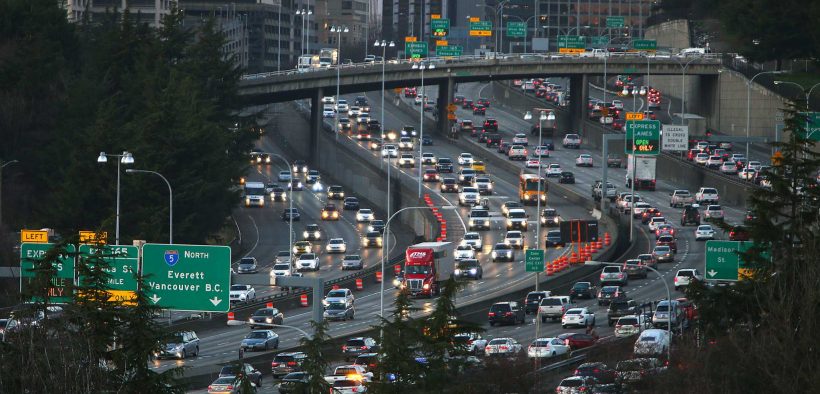Research Find: Seattle’s Traffic One of The Worst in North America

People residing in Seattle very well know about the traffic situation. The traffic was worse in 2017 as well in 2018. Seattle’s traffic is certainly not the best in the US. The traffic situation is among the worst in comparison to other States.
Recently, TomTom-a location technology firm conducted a study, and the result is not a surprise. The research data revealed that Seattle is ranked among the top 10 worst traffic cities of North America. Throughout the United States, Seattle ranked as the fifth worst city with a total congestion level of 31 percent, meaning drivers spend 31 percent more time in the car than on a trip without traffic.
Before this, the TomTom navigation technology system developer conducted a study for two consecutive years, 2017 and 2018, respectively, Seattle congestion level remained the same in 2018. In 2018 the congestion level was 31 percent, which remained the same in 2019 as well.
Days with Highest Congestion Level :
Peak time was the worst time to travel, especially on Tuesday, Wednesday and Thursday. During these days the drivers usually faced congestion level of 60 to 73 percent. Thursday, marked as the worst day with a congestion level of 73 percent at 5.p.m. This indicates that drivers spend 73 percent more time in traffic than the average time.
Tuesday morning around 8 a.m. was the worst traffic condition with a congestion level of 62 percent. Wednesday and Thursday congestion level was at 59 percent within that hour.
Looking at this data, if you are thinking of travelling and want to know the best time to travel with low traffic, then hit the road before 6.a.m or after 7 p.m. These timings are considered having less traffic and low congestion level.
How Is Congestion level Measured?
TomTom Traffic Index measured the congestion levels. The Traffic Index tool first created a base travel time, or it noted how fast a driver could move from one point to another, i.e., from point A to point B especially at low traffic situation or during free-flowing traffic situations, then the travel time was compared with the average actual travel time.
The study revealed the congestion level, 2019 congestion level was 31 percent, meaning drivers that could take 30 minutes to travel, for instance, a trip could take a motorist little more than 39 minutes to travel.
The congestion level remained constant for all the previous years. TomTom Traffic Index also mentioned that for the year 2017 and 2018, during the holiday season, the study saw December 25th with very low congestion level with only 6 percent in 2017 and in 2018 congestion level was much lower than 2017, of just 2 percent.
In 2018, the highest level of congestion was noted on Friday, June 8 with around 51 percent, which indicates that a motorist could take more than 45 minutes to travel a distance that usually requires 30 minutes in a free-flowing traffic situation.
This year, history will repeat once again, so be ready to experience the delays for the coming weekend.
To get this data, TomTom studies 1.26 billion miles of Seattle roadway; it also included non-highways and highways.




